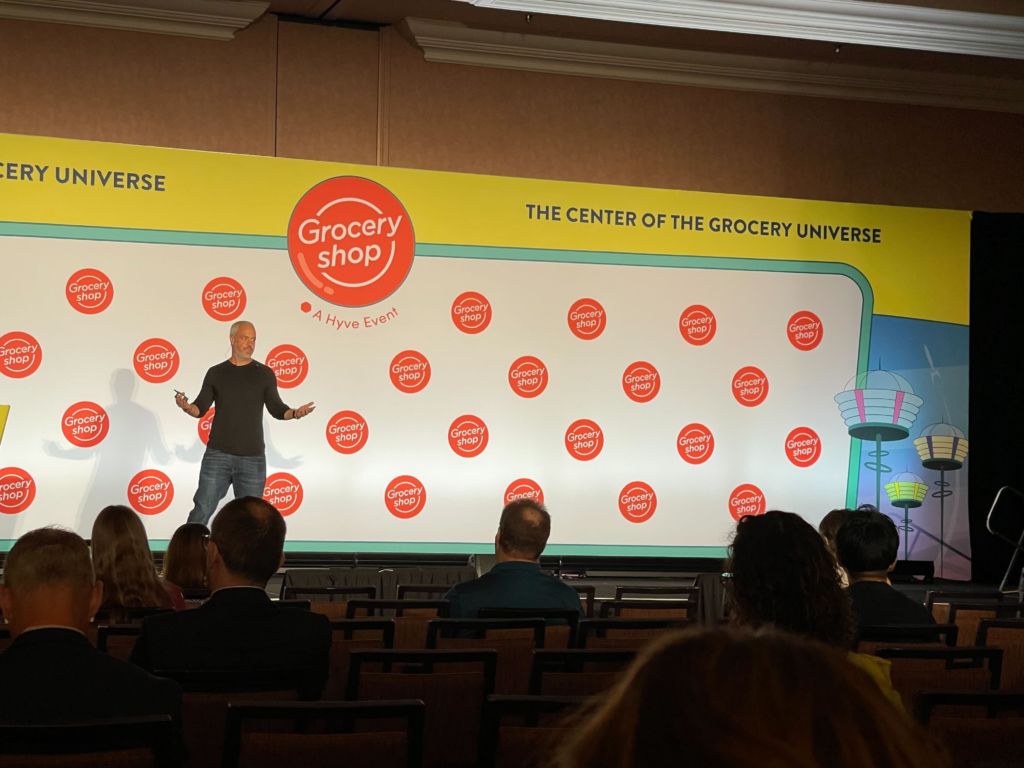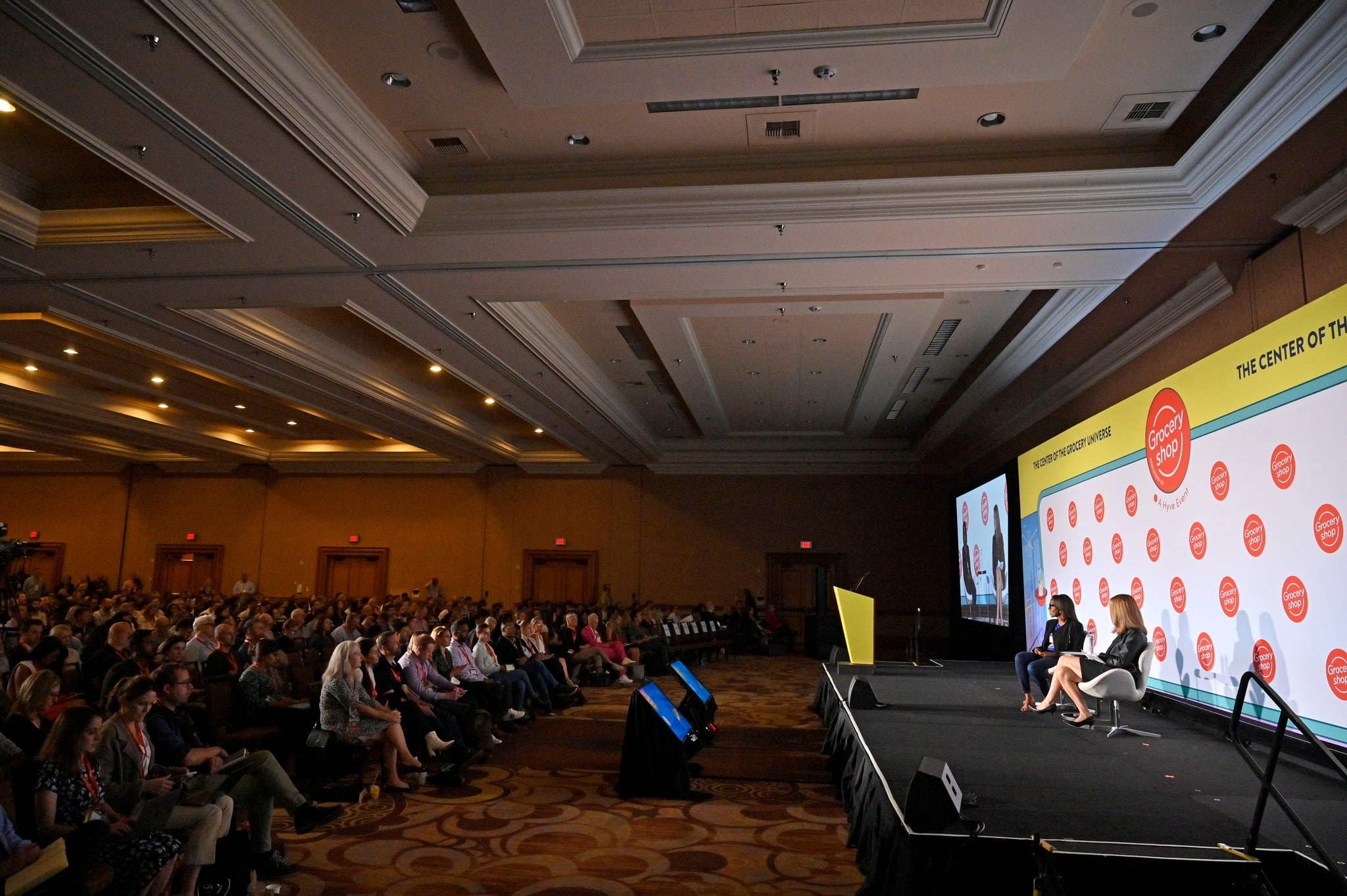What you need to know about the event and the evolving digital grocery landscape.
At the end of September, The Mandalay Bay Convention Center in Las Vegas transformed into “The Center of the Grocery Universe” with the annual Groceryshop conference. The event brought together leading brands from the industry, created space for valuable connections, and featured over 200 scheduled talks from experts across the grocery landscape.



With so much packed into four days, it’s impossible to account for everything that happened. So here are five key takeaways from this great event:
Takeaway #1: Groceryshop knows how to host a conference.
Groceryshop has mastered the formula for a successful convention. They skillfully balanced entertainment and information and kept energy levels up for the entire experience. The speakers they booked were engaging, featuring some of the top CEOs in the industry, and the hosted meetings were executed masterfully. The organizers did a phenomenal job of bringing the right people together for important conversations that will ultimately lead to successful partnerships.
The success of the conference could be felt in the city of Las Vegas itself. Hotels were sold out, restaurants were filled, and everywhere you looked, you saw someone from the industry. It was very clear that this conference matters. Anyone in grocery needs to make this event a priority every year.
Takeaway #2: Digital grocery is officially mainstream.
Groceryshop 2022 confirmed something that everyone had already assumed: that digital grocery is here to stay. The data backs this up, with several studies reporting that the shift from traditional advertising channels to a more intentional focus on digital increases in effectiveness each year.
Conversations around Groceryshop echoed this sentiment, with brands frequently demonstrating how they are preparing for this new era. The reasons are multifaceted, with shoppers continuing to be more intentional about planning shopping trips ahead of time and increased abilities in targeting segmented audiences. Regardless, it was abundantly clear that digital offerings aren’t going anywhere.
Takeaway #3: Retail Media Networks are everywhere.
RMNs have claimed their stake as the exciting new topic that everyone is interested in, with countless sessions devoted to figuring out how to best deploy them. And rightfully so, RMNs bring big promises of increased revenue and access to valuable data. But they also bring unique challenges that leave retailers wondering who they can trust.
With everyone vowing that they can do it all, there is more and more uncertainty about how best to approach the space. One thing is for sure, anyone who claims to be an expert or posits a one-size-fits-all strategy should be avoided. Major chains that have had RMNs for multiple years are undoubtedly going to be successful and have the clout to get CPG dollars no matter what they do. But this isn’t the case for everyone. Success in the space requires flexibility, and successful strategies are the result of lots of previous trial and error. However, the time to get involved is now. Groceryshop proved that RMNs will continue to rise in popularity, and delaying could mean missing out on big profits in the future.
Takeaway #4: Delivery services made their presence known.
As online grocery shopping continues to evolve post-pandemic, so do options for delivery services. Instacart wisely positioned its new “Connected Stores” program by announcing it the week of the conference. The news came on the heels of Instacart’s acquisition of Rosie, an e-commerce platform for local and independent retailers, earlier in the month. These big moves taking place in the weeks leading up to the conference worked to generate a lot of positive buzz around Las Vegas.
But Instacart is not alone. DoorDash, UberEats, and Shipt were also active at Groceryshop, attempting to make a more intentional pivot and stay competitive in the grocery space. The surplus of delivery options will be important to keep an eye on in the months ahead.
Takeaway #5: Everyone is promising access to data.
Data and analytics are undoubtedly valuable. They lead to innovative ways to engage consumers and allow grocers to build lasting relationships with their customers. The importance of data was certainly felt at this year’s Groceryshop, with plenty of vendors promising new ways to collect information about customers and their habits. But merely collecting data isn’t all that valuable in and of itself.
Data is a lot like oil. Pumping oil is one thing, but its true value comes from processing it into gasoline. Similarly, data alone isn’t all that valuable. Just like oil, it needs to be processed, and strategies need to be built on the insights that are gathered. This work is often collaborative and requires a team of people with a proven track record for doing this type of difficult work.

The Future of Grocery
Groceryshop made it clear that the industry is facing an overabundance of tech options. For every perceivable task grocers face, there are multiple 3rd party vendors that guarantee they have the solution. Many of these tech solutions do good work and could potentially bring value. But adequately managing relationships with that many vendors requires a dedicated team. Otherwise, grocers risk overextending themselves.
Webstop helps cut through the complexities by providing integrated support for grocers. The retailers that have worked with Webstop over the years have benefitted from our ability to not only vet 3rd party vendors but also organize them into a cohesive strategy that gets results. Groceryshop proved that the industry is getting increasingly complicated. But Webstop acts as a guide to help cut through the complexity and help retailers make sense of it all.
One More Takeaway…
Allow me to leave you with one final takeaway. If you’re ever in Las Vegas, do yourself a favor and make a reservation to do the tasting menu at Momofuku. I promise you won’t be disappointed!

